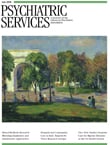Letter
Reducing Barriers to Care by Looking Closely at Stigma: Reply
In Reply: We thank Mr. Lee for his thoughtful letter and his interest in our work. He raises several important points. We agree that the mental health services literature benefits from exploring alternative measures of perceived need for mental health services, particularly to capture help-seeking sentiments in diverse ethnic populations. We also agree that understanding differences across ethnic groups requires looking more deeply at factors such as nativity and length of time since immigration, as Mr. Lee suggests.
Regarding Asian students in our sample, we can note a few additional findings that were not in our article. First, international Asian students (that is, those who were not U.S. citizens or residents) had higher levels of perceived stigma and lower levels of perceived need than Asian Americans, although the latter group was still significantly different from other student groups on these measures. Second, Asian students—both international students and Asian Americans—were less likely than other students to report that their mental health affected their academic performance. However, as Mr. Lee hypothesized, this difference was smaller and less robust than that for the measure of perceived need that we reported in our article.
These findings and the points raised by Mr. Lee all point to the complexity of stigma's role in help seeking for mental health problems. As several scholars have noted, the concept of stigma has many dimensions and potential consequences ( 1 , 2 ). On this point, we believe that future studies of stigma should include multiple measures of stigma and test for differences across subpopulations in the relative importance of perceived public stigma versus one's own stigmatizing attitudes toward mental illness and mental health services use. It is quite possible that different facets of stigma matter more or less in different subpopulations. Understanding the extent to which that is true may be valuable for designing optimal interventions to reduce barriers to mental health services use.
1. Corrigan P: How stigma interferes with mental health care. American Psychologist 59:614–625, 2004Google Scholar
2. Link BG, Phelan JC: Conceptualizing stigma. Annual Review of Sociology 27:363– 385, 2001Google Scholar



